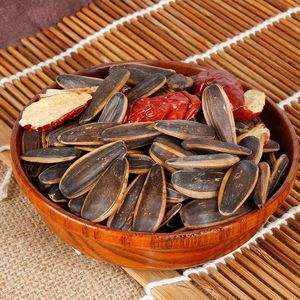Website:Innuts.com
The origin of the sunflower and its seeds can be traced back to North America, where they were first cultivated and consumed by indigenous peoples. Sunflower seeds have a long and fascinating history deeply intertwined with Native American cultures.
The sunflower (Helianthus annuus) is a tall, flowering plant that belongs to the Asteraceae family. It is native to North America and was an important crop for many Native American tribes. The plant's vibrant yellow flowers and its abundant seeds held both practical and symbolic significance for these indigenous cultures.
The exact origins of sunflower cultivation can be traced to what is now known as the central and western regions of the United States, particularly in present-day states like New Mexico and Arizona. Archaeological evidence suggests that sunflowers were cultivated as early as 3000 BCE in this region, making them one of the earliest domesticated crops in North America.
Native American tribes such as the Hohokam, Ancestral Puebloans, and Mississippian cultures were among the first to cultivate sunflowers. They recognized the versatility and nutritional value of sunflower seeds, incorporating them into their diets as a valuable food source. The seeds provided essential fats, protein, and other nutrients, contributing to the tribes' overall nutrition and well-being.
These early cultivators of sunflowers practiced selective breeding, gradually developing larger and more abundant seeds through generations of cultivation. Over time, different varieties of sunflowers emerged, with variations in seed size, shell thickness, and oil content.
Sunflowers also held cultural and ceremonial significance for Native American tribes. The plant's large, radiant flowers were considered sacred and were used in rituals and celebrations. Sunflowers were associated with the sun and were seen as symbols of fertility, abundance, and vitality.
The knowledge and cultivation of sunflowers spread across different Native American cultures through trade and cultural exchanges. Sunflower seeds became an important part of the Native American diet and were prepared and consumed in various ways. The seeds were often roasted, ground into flour, or mixed with other ingredients to create nutritious and flavorful dishes.
With the arrival of European explorers in the Americas, sunflowers and their seeds caught the attention of the newcomers. The explorers recognized the potential of sunflower seeds as a valuable food source, and they brought seeds back to Europe, where sunflowers were subsequently cultivated.

In the 18th century, sunflowers gained popularity in Russia, and the country became a significant center for sunflower cultivation. Russian farmers further developed sunflower varieties, focusing on seed production for both oil extraction and consumption. This led to the development of sunflower oil, which became widely used in cooking and various industrial applications.
Sunflower seeds spread to other parts of Europe and gradually gained recognition worldwide. Today, sunflowers are cultivated in many countries, including the United States, Russia, Ukraine, China, Argentina, and Hungary. The seeds are harvested for various purposes, including food, oil production, and bird feed.
Sunflower seeds have become a popular snack and ingredient in numerous cuisines globally. They are commonly consumed roasted and salted, offering a crunchy and flavorful treat. In addition to being a tasty snack, sunflower seeds are recognized for their nutritional value. They are rich in healthy fats, protein, fiber, vitamins (such as vitamin E), and minerals (such as magnesium and selenium).
The versatility of sunflower seeds is showcased in different culinary traditions. They are used as toppings for salads, baked goods, and desserts. Ground sunflower seeds can be incorporated into bread, granola bars, and energy balls. Sunflower seed butter, similar to peanut butter, is a popular alternative for those with nut allergies.
In conclusion, sunflower seeds originated in North America, where they were cultivated and consumed by Native American tribes for thousands of years.
Please follow Innuts.com.

